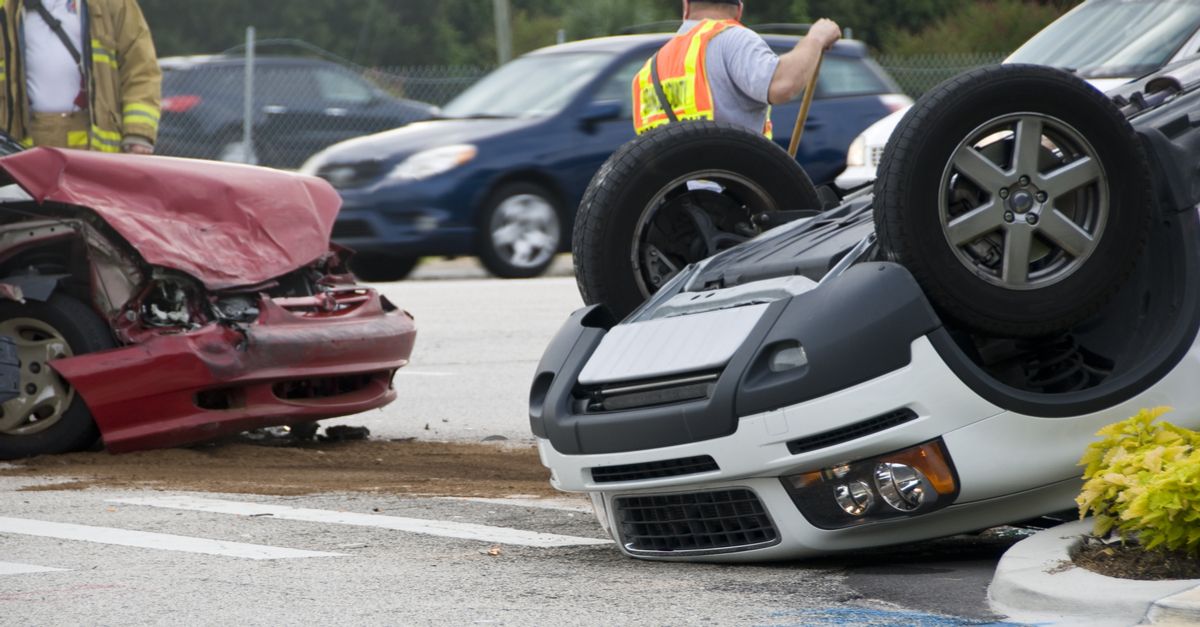Many a motorist who has set out to drive somewhere on New Year's Day has departed to an emphatic chorus of "Be careful!" admonitions from relatives, friends, and acquaintances, the presumption being that New Year's is a particularly dangerous day to be out on public roads. The combination of a holiday noted for alcoholic consumption among its revelers falling at a time of year when daylight hours are short and winter weather makes for less than ideal driving conditions is presumed to pose an especially high risk for motorists.
But is New Year's Day actually the most dangerous day for driving? While the general concept of "danger" is difficult to quantify, if we define it to mean "the day of the year that typically sees the greatest number of automobile accident-related deaths," New Year's Day is not the most dangerous day of the year.
The Insurance Institute for Highway Safety (IIHS) analyzed data from the federal Fatality Analysis Reporting System (FARS) for the seventeen-year span from 1986 to 2002 and calculated the average number of people who died in automobile crashes for every date of the year. The results showed that in number of fatalities, January 1 ranked lower than the days immediately preceding the Christmas and Fourth of July holidays, and not significantly higher than several days in early to mid-August:
|
||||||||||||||||||||||||||||||||||||
When we ran the same stats ourselves for the year 2012, we found a similar pattern: The days with the highest numbers of traffic fatalities were primarily Saturdays that typically fell between the beginning and end of the summer driving season (mid-June to late August) and often coincided with mid-year holidays and celebrations (Cinco de Mayo, Memorial Day, 4th of July), but New Year's Day itself ranked well down the list, tied with two other days (September 15 and October 20) for 18th place. The overwhelming preponderance of high-fatality traffic days on this list also fell on Sundays:
|
|||||||||||||||||||||||||||||||||||||||||
We note for the sake of thoroughness that this chart is based on absolute figures, not relative ones. A significant factor behind why summer months correspond to higher numbers of traffic fatalities is because those are the months in which the total number of miles driven by motorists reaches its peak for the year (while January and February represent the opposite extreme), so the fatal accident rate (i.e., fatalities per mile driven) may be higher at other times of the year.
Not surprisingly, as the IIHS observed, alcohol plays a large part in the reason why holidays such as New Year's and the Fourth of July experience more automobile-related deaths:
Forty-one percent of the deaths on the 4th [of July] and 51 percent on January 1 involved high blood alcohol concentrations. These proportions compare with 33 percent on December 25 and January 8 (days in close proximity that aren't associated with New Year's) and 31 percent on June 27 and July 11.
The fatality numbers cited above include drivers, passengers, and pedestrians. If we exclude the occupants of vehicles and consider the statistics from a pedestrian standpoint alone, New Year's Day is the most dangerous day of the year to be afoot on or around public roadways, followed closely by Halloween:
|
||||||||||||||||||||||||||||||||||||
It should be noted that although traffic-related deaths may increase around certain holidays, the number of fatalities across the entire 17-year period covered by the study still averaged 117 per day. As Allan Williams of the IIHS cautioned, "While more deaths do occur on some of the holidays, the toll of fatalities is relentless every day, all year long."

